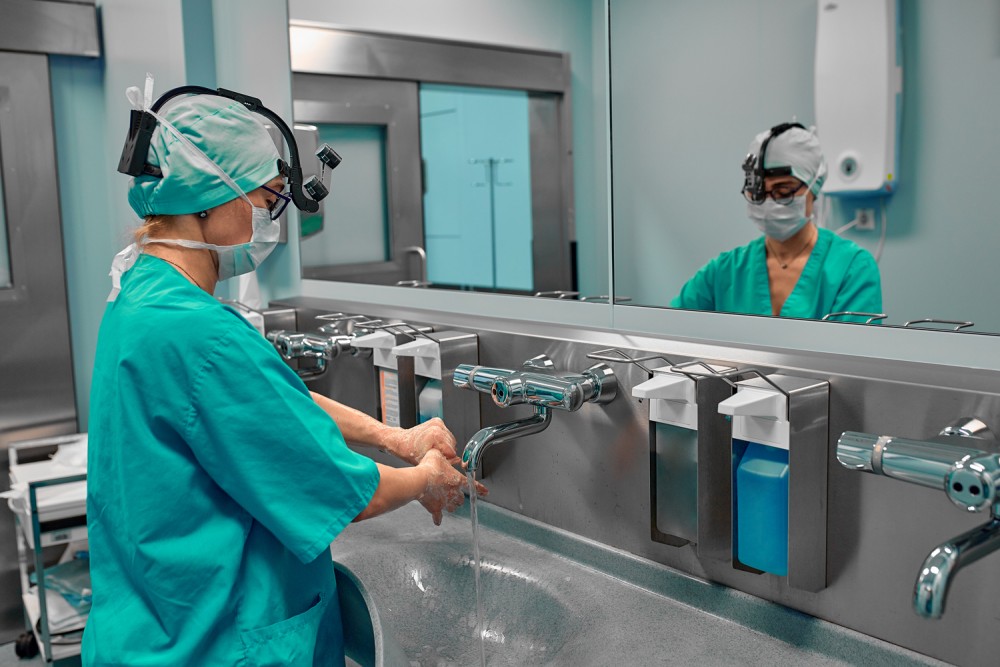Patient safety is a fundamental pillar of healthcare, and the implementation of robust safety protocols is crucial in creating a secure medical environment. In this article, we will explore the importance of patient safety, the key protocols that ensure it, and the role of healthcare institutions in safeguarding the well-being of patients.
The Imperative of Patient Safety
Patient safety is a non-negotiable aspect of healthcare. It encompasses a wide range of practices, procedures, and guidelines aimed at preventing harm to patients during their medical care. Ensuring patient safety is not only a moral obligation but also a legal and ethical responsibility for healthcare institutions.
The Key to Patient Safety:
Infection Control: Infection prevention is paramount to patient safety. Stringent infection control protocols include rigorous hand hygiene, sterilization of medical equipment, and maintaining a clean and sanitized medical environment. These measures reduce the risk of healthcare-associated infections, which can be particularly harmful to vulnerable patients.
Medication Safety: Errors in medication administration are a common cause of patient harm. Medication safety protocols involve double-checking prescriptions, verifying patient identities, and educating both healthcare staff and patients about proper medication use. Electronic health records and barcode scanning systems also play a vital role in reducing medication errors.
Surgical Safety: Surgical procedures carry inherent risks, but strict safety protocols can mitigate these risks significantly. Pre-operative verification processes, the marking of surgical sites, and the use of checklists all contribute to surgical safety. In addition, well-trained surgical teams and adherence to aseptic techniques are essential.
Fall Prevention: Falls are a major cause of injuries in healthcare settings. Patient safety protocols for fall prevention include assessing patient risk, implementing preventive measures, and providing assistance when needed. Adequate lighting, non-slip flooring, and grab bars are examples of environmental modifications that enhance safety.
Patient Identification: Ensuring that patients are correctly identified is foundational to safety. Protocols include the use of two patient identifiers, such as a name and date of birth, and the verification of patient identity at multiple points of care.
Communication and Handoff Protocols: Effective communication among healthcare providers is critical for patient safety. Standardized handoff protocols during shift changes and transfers of care help ensure that crucial patient information is not lost or miscommunicated.
Emergency Response: Preparedness for emergencies is a cornerstone of patient safety. Healthcare facilities must have well-established protocols for responding to medical emergencies, fires, and natural disasters. Regular drills and training ensure that staff can respond effectively in high-stress situations.
Patient Engagement: Patient safety goes beyond healthcare provider actions. Encouraging patients to be active participants in their care can improve safety outcomes. Patients should be educated about their conditions, medications, and treatment plans. They should also feel comfortable asking questions and voicing concerns.
The Role of Healthcare Institutions:
Healthcare institutions play a pivotal role in upholding patient safety. Their responsibilities include:
Policy Development: Healthcare institutions must establish and enforce patient safety policies and procedures. These policies should be based on best practices and guidelines from reputable sources.
Education and Training: Staff at all levels require ongoing education and training in patient safety protocols. This includes familiarizing them with the latest research and practices in patient safety.
Continuous Improvement: Healthcare institutions should have mechanisms in place to monitor and assess patient safety. Regular quality improvement initiatives can identify areas for enhancement.
Reporting Systems: Facilities should have confidential systems for reporting incidents and near misses. These systems help in learning from mistakes and implementing corrective actions.
Patient Advocacy: Healthcare institutions should promote a culture of patient advocacy. This involves listening to patients’ concerns, addressing their needs, and actively involving them in decision-making about their care.
Resource Allocation: Adequate resources, including staffing levels and appropriate medical equipment, are essential for patient safety. Healthcare institutions should ensure that they allocate resources wisely to support patient well-being.
Patient safety is the foundation of quality healthcare. Robust safety protocols, best practices, and the commitment of healthcare institutions are essential in creating a secure medical environment. It is through these measures that we can minimize risks and ensure that patients receive the care they need without harm. Patient safety is an ongoing journey, requiring continuous vigilance, education, and improvement to safeguard the well-being of those entrusted to our care.

